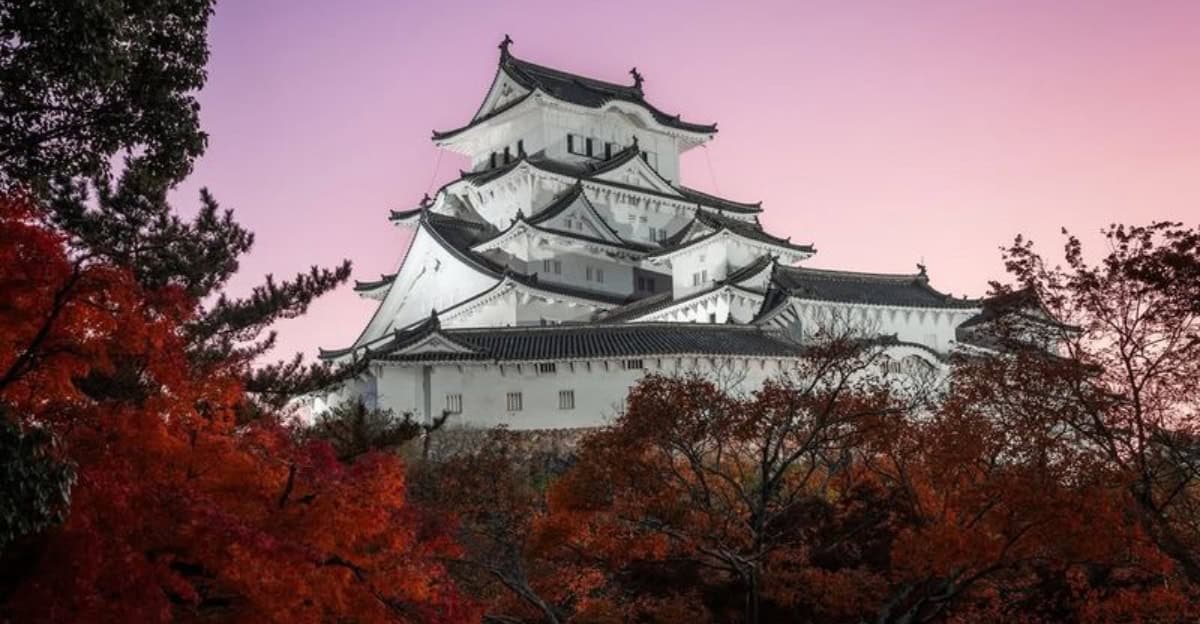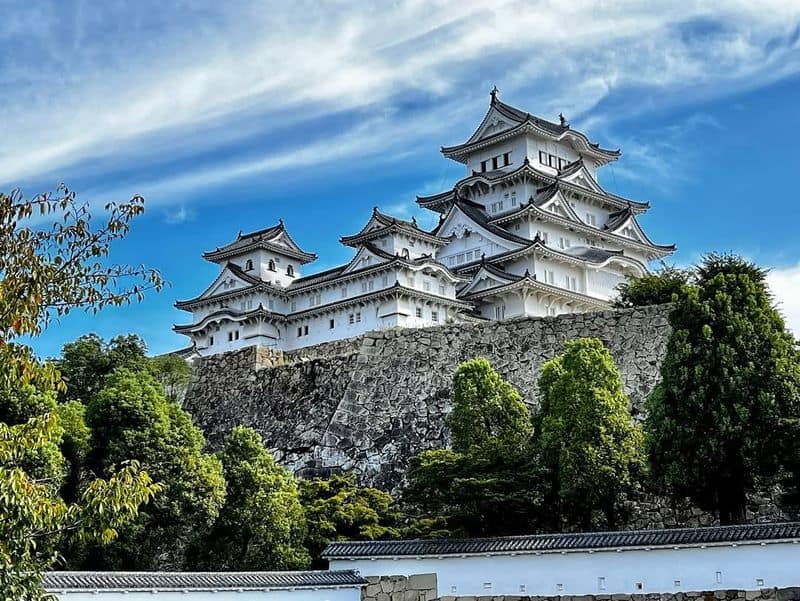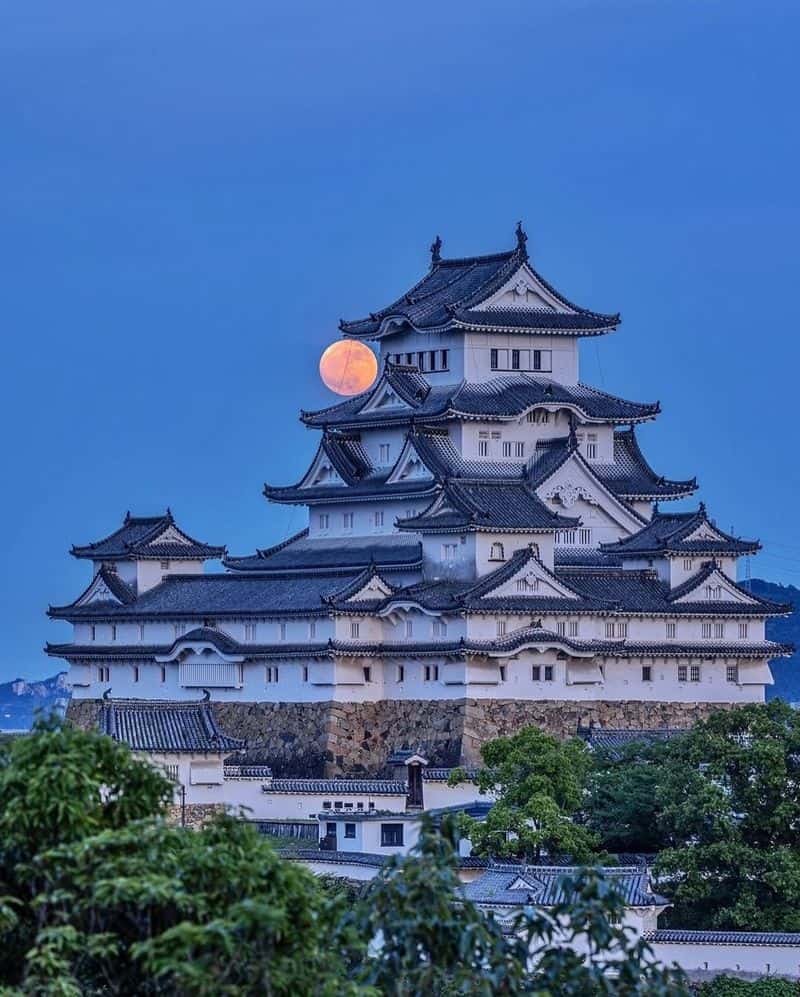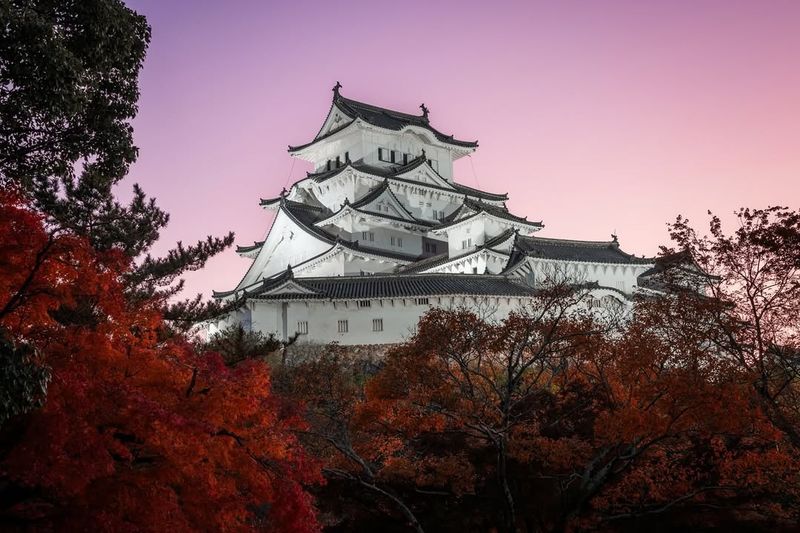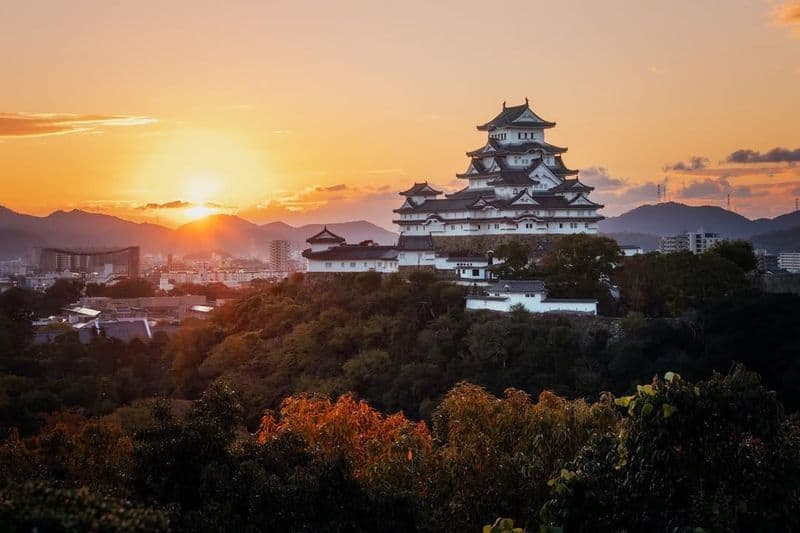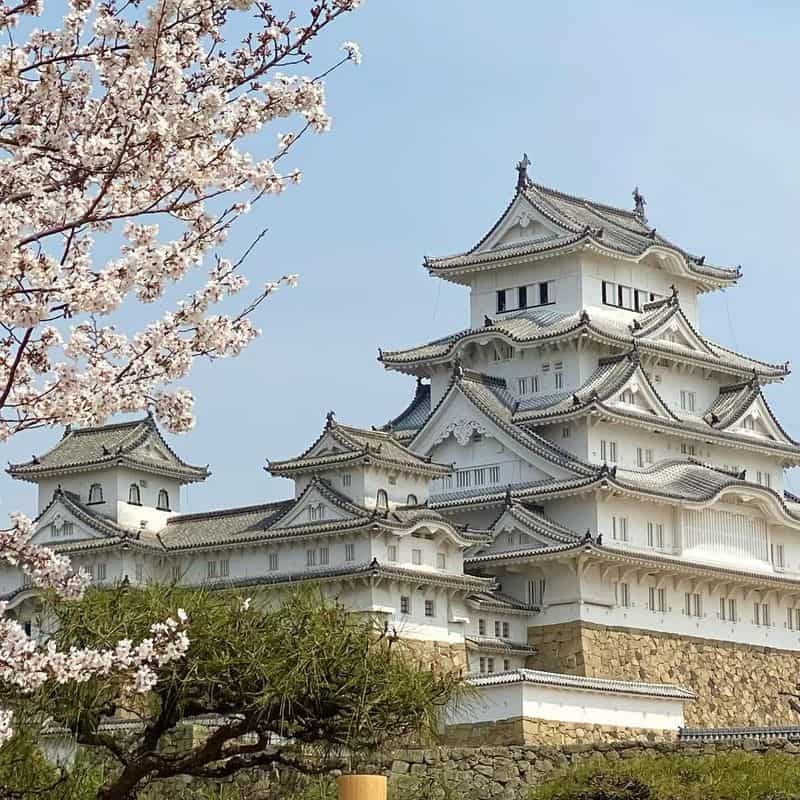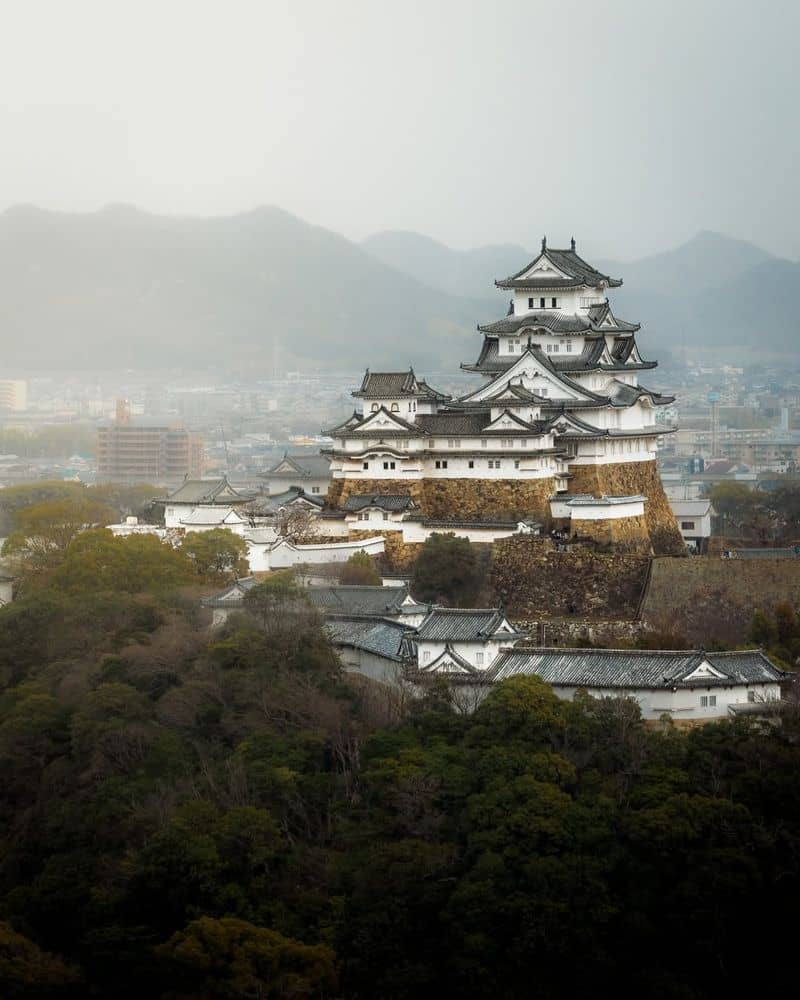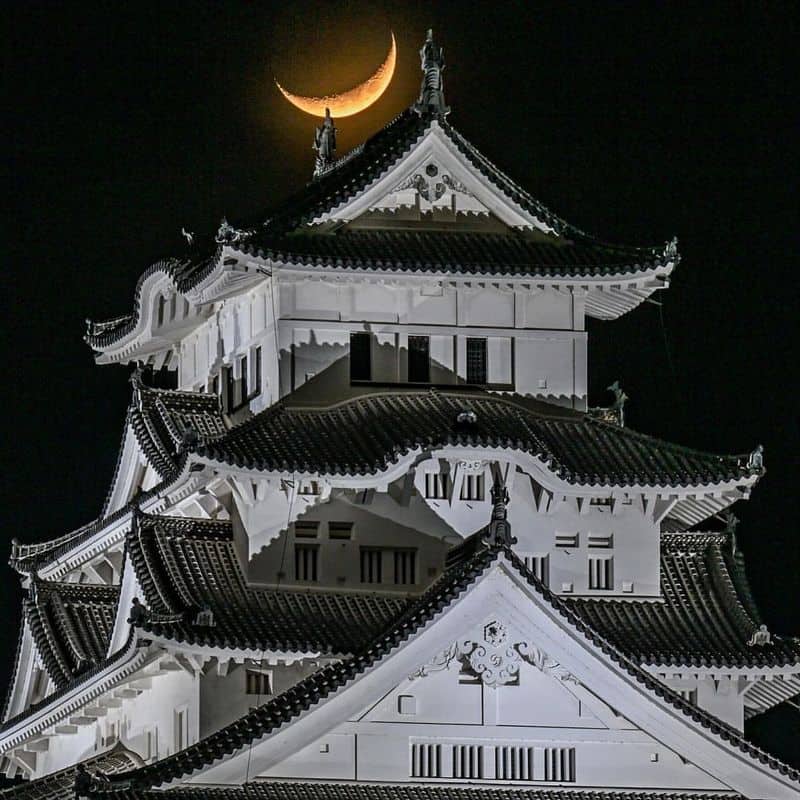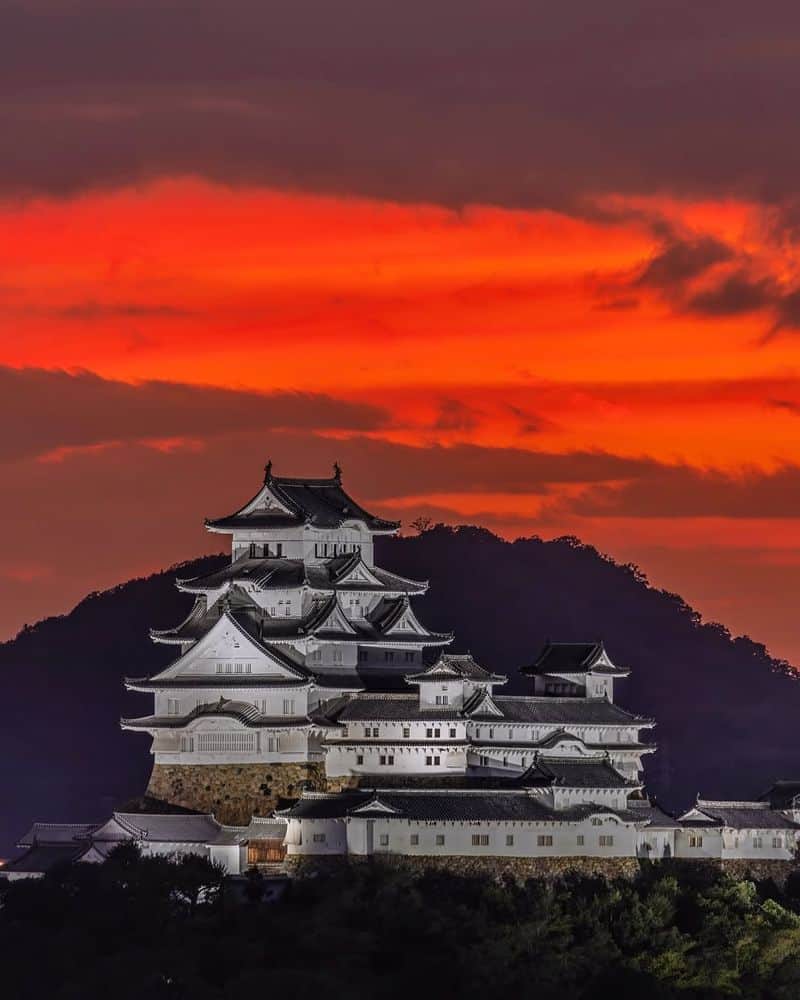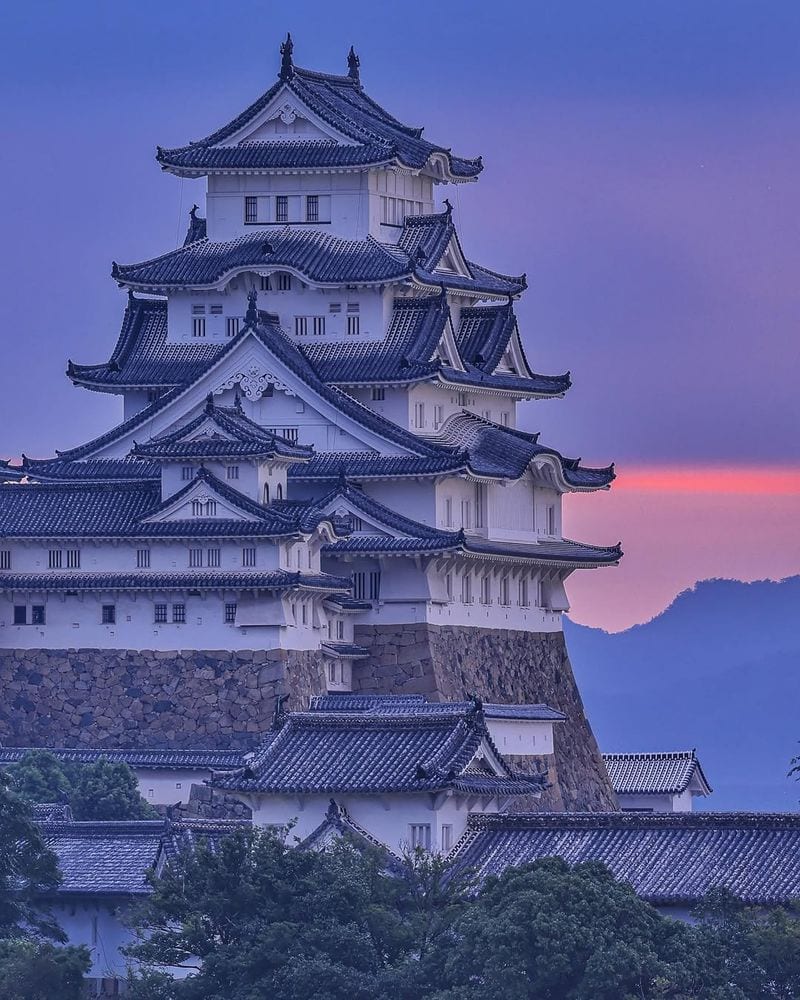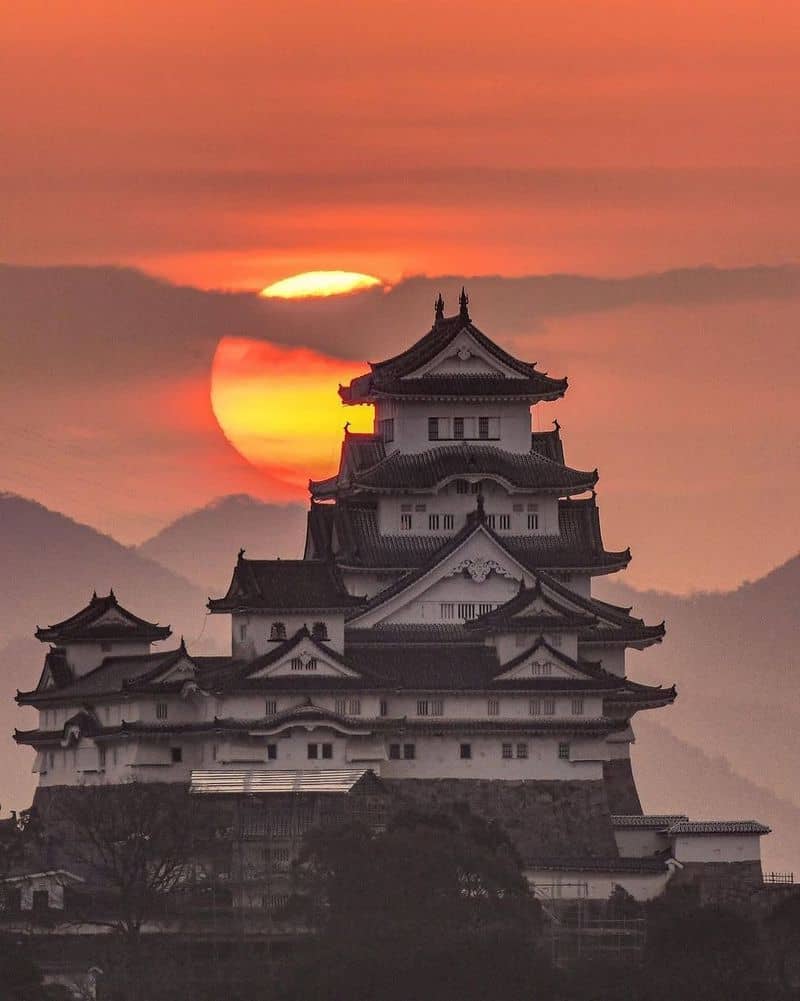Himeji Castle, also known as the White Heron Castle, is a stunning example of Japanese architecture and history.
As one of Japan’s most iconic castles, it draws visitors from around the world eager to explore its secrets and beauty.
In this article, we will uncover 10 fascinating facts about Himeji Castle that are sure to surprise and delight you.
1. Architectural Masterpiece
Himeji Castle stands as a testament to the ingenuity of Japanese architectural design. Completed in 1609, this white-walled fortress is often likened to a heron taking flight.
Its complex design includes multiple layers of defense, maze-like layouts, and hidden passages.
Walking through the castle, visitors are often amazed at the strategic brilliance employed in its construction.
The elegance of its form, combined with practical military features, makes it a true architectural masterpiece.
Despite its military purpose, the castle exudes a serene beauty that captivates both history buffs and casual tourists. It truly embodies Japan’s rich cultural heritage.
2. UNESCO World Heritage Site
Designated as a UNESCO World Heritage Site in 1993, Himeji Castle is recognized for its outstanding universal value.
This prestigious title highlights the castle’s exceptional preservation and historical significance.
Tourists flock to Himeji to witness its grandeur and learn about its storied past. The castle’s pristine condition offers a rare glimpse into Japan’s feudal era architecture.
Surrounded by beautiful gardens, it stands as a symbol of peace and resilience.
Visiting Himeji is like stepping back in time, offering a unique educational experience for people of all ages. The castle’s status further cements its place in global heritage.
3. Survived Natural Disasters and War
Himeji Castle’s ability to withstand natural disasters and war is nothing short of remarkable. It has survived numerous earthquakes, most notably the Great Hanshin Earthquake of 1995, with minor damage.
During World War II, the castle remained unscathed despite nearby bombings. This resilience is a testament to the skill of its builders and the quality of materials used.
Today, it stands proudly, a symbol of strength and endurance. Visitors walk through its corridors, often reflecting on the history it has witnessed.
The castle’s survival adds an impressive chapter to its storied legacy.
4. Film Location
Himeji Castle’s cinematic appeal has made it a popular film location over the years. Its majestic presence can be seen in numerous movies, both domestic and international.
Notably, the castle featured in the James Bond film “You Only Live Twice,” adding a touch of authenticity to the movie’s Japanese setting.
The timeless beauty of the castle provides an ideal backdrop for samurai films and period dramas.
As tourists explore the castle grounds, they often imagine scenes from their favorite movies, adding an extra layer of excitement to their visit. It’s a must-see for any film enthusiast.
5. Okiku’s Well Legend
Himeji Castle is home to the eerie legend of Okiku’s Well. According to folklore, Okiku was a servant wrongfully accused of losing valuable plates.
In despair, she took her own life by throwing herself into a well. Her ghost is said to haunt the castle, counting plates in a mournful voice.
The well remains a popular spot for visitors seeking a spooky experience.
The tale adds a mysterious charm to the castle, blending history and legend.
Those brave enough to visit at dusk often find themselves listening for Okiku’s ghostly whispers. It’s an intriguing story that continues to captivate imaginations.
6. Osakabehime’s Haunting
The legend of Osakabehime adds a supernatural twist to Himeji Castle’s rich history. Said to reside in the castle’s upper chambers, Osakabehime is a protective spirit who watches over the fortress.
Legend has it that she only appears at night, granting protection to the castle and its inhabitants. Visitors often sense her presence, adding an air of mystery to their exploration.
The story of Osakabehime weaves history and folklore into a fascinating narrative, sparking curiosity and imagination.
Ghost hunters and thrill-seekers find the tale particularly intriguing. It’s a unique aspect of Himeji’s enchanting atmosphere.
7. Ubagaishi Stone
The Ubagaishi Stone is one of Himeji Castle’s lesser-known yet fascinating features. This ancient stone, located in the castle’s gardens, is shrouded in mystery.
According to legend, the stone was brought by an old woman who contributed it to the construction of the castle. Her dedication and spirit are said to be embodied in the stone.
Visitors often touch the Ubagaishi Stone, hoping to absorb its historical essence and energy.
The story of the stone offers a glimpse into the human effort behind the castle’s creation, adding depth to the visitor experience.
8. Senhime’s Residence
Senhime, a prominent figure in Japanese history, once resided within Himeji Castle’s elegant walls. As the granddaughter of Tokugawa Ieyasu, her presence added prestige to the castle.
Her quarters reflect her noble status, showcasing traditional Japanese architecture and design.
Surrounded by tranquility, Senhime’s residence offers a glimpse into the life of a princess during Japan’s Edo period.
Visitors can explore her rooms, imagining the opulence and elegance of her time.
The residence adds a personal touch to the castle’s grand history, connecting visitors to its storied past and illustrious inhabitants.
9. Tallest Wooden Structure
Himeji Castle proudly holds the title of Japan’s tallest surviving wooden structure. Its impressive height and sturdy construction make it a marvel of ancient engineering.
The wooden beams and intricate joinery showcase the craftsmanship of its builders, creating a structure that has stood the test of time.
Ascending the castle offers visitors panoramic views of the surrounding city and countryside. Standing atop the tallest wooden structure in Japan is an experience that leaves a lasting impression.
It’s a testament to the durability and skill involved in its creation, capturing the awe of all who visit.
10. Christian Symbolism
Himeji Castle contains a fascinating secret: hidden Christian symbolism. During a time when Christianity was banned in Japan, some architects embedded subtle symbols within the castle.
One tale speaks of a hidden cross within the architecture, a sign of defiance and faith. This hidden symbolism adds an intriguing layer to the castle’s history.
Visitors often seek out these secret symbols, adding a sense of adventure to their exploration.
The blend of religion and architecture offers a unique insight into the period’s cultural dynamics. It’s a hidden gem that continues to intrigue and inspire.

